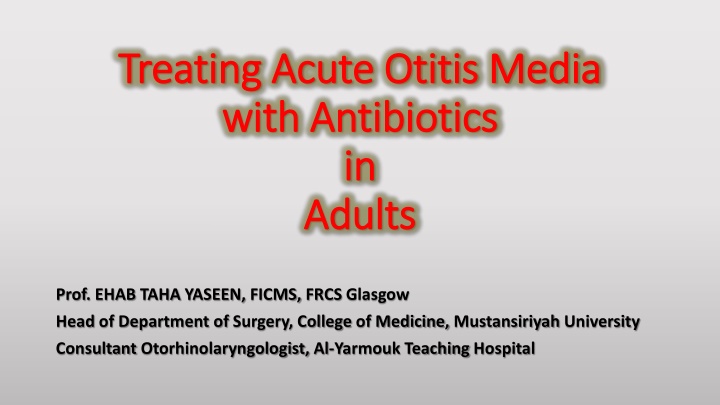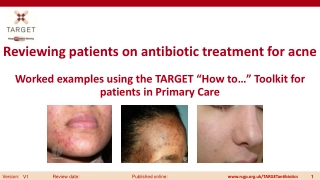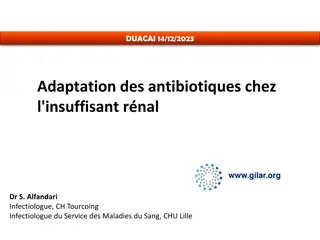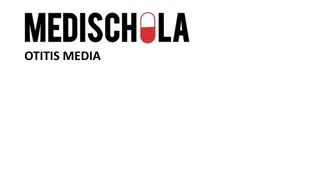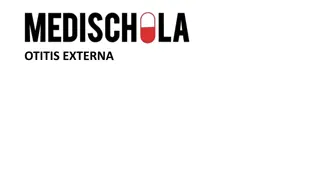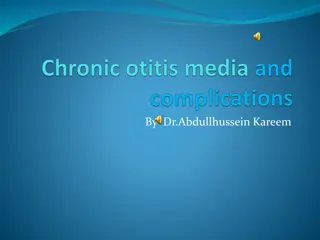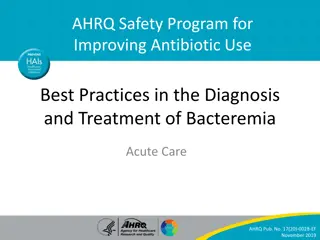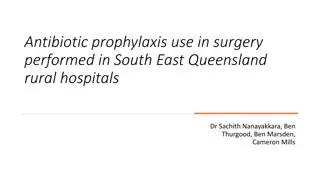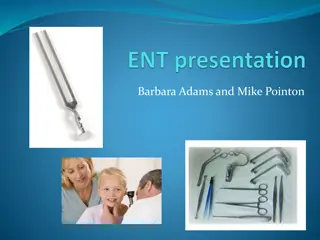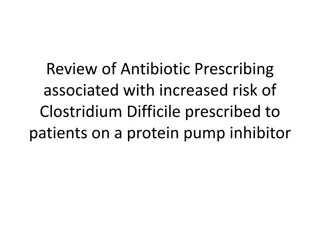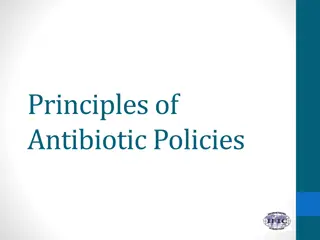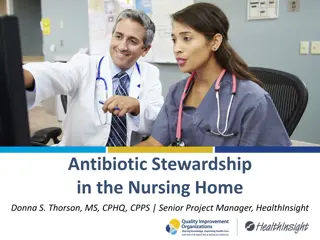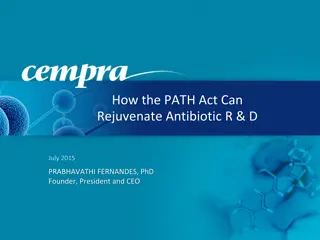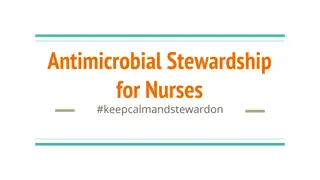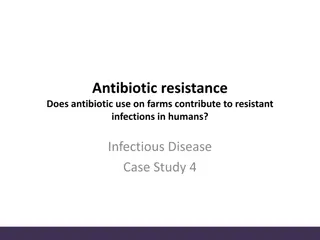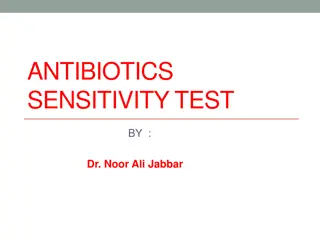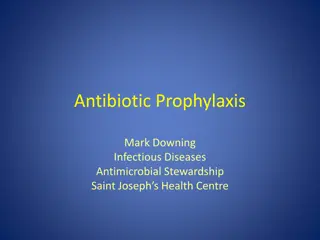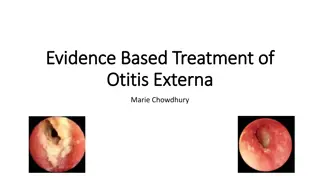Antibiotic Treatment for Acute Otitis Media in Adults
Acute otitis media is an inflammation of the middle ear that can be effectively treated with antibiotics. Learn about proper antibiotic selection for adults, common causative pathogens, symptoms, and treatment protocols in this informative guide.
Download Presentation

Please find below an Image/Link to download the presentation.
The content on the website is provided AS IS for your information and personal use only. It may not be sold, licensed, or shared on other websites without obtaining consent from the author.If you encounter any issues during the download, it is possible that the publisher has removed the file from their server.
You are allowed to download the files provided on this website for personal or commercial use, subject to the condition that they are used lawfully. All files are the property of their respective owners.
The content on the website is provided AS IS for your information and personal use only. It may not be sold, licensed, or shared on other websites without obtaining consent from the author.
E N D
Presentation Transcript
Treating Acute Otitis Media Treating Acute Otitis Media with Antibiotics with Antibiotics in in Adults Adults Prof. EHAB TAHA YASEEN, FICMS, FRCS Glasgow Head of Department of Surgery, College of Medicine, Mustansiriyah University Consultant Otorhinolaryngologist, Al-Yarmouk Teaching Hospital
Learning Objectives Learning Objectives The objectives are to know: Proper Selection of Antibiotics for Adults with AOM
Introduction Introduction Acute inflammation of the middle ear cleft. Duration = 3 weeks. Marked by the presence of infected middle ear fluid and inflammation of the lining mucosa. Impaired function of the Eustachian tube. Usually responds promptly to antimicrobial therapy
Children vs. adults (45 to 60% occur under 5 y of age) Microbiology (Adults =Children) 50 60 % S. pneumoniae and H. influenzae 3 14 % M. catarrhalis Viruses (predisposing & coinfect) (Rhinovirus, RSV, Parainfluenza, Coronavirus, and adenovirus) Less common (Mycoplasma pneumoniae, diphtheritic otitis, tuberculous otitis, otogenous tetanus, Chlamydia trachomatis).
Symptoms Symptoms Unilateral vs. Bilateral Otalgia (mild, moderate, or severe) Decreased hearing Purulent otorrhea (sudden relief of pain) Other symptoms (fever, severe pain behind the ear, facial paralysis)
Signs Signs Key features include:
Treatment Treatment Antibiotics are the mainstay of treatment Determined by knowledge of the most common causative pathogens It seems prudent to treat all adult patients with antibiotic therapy: Limited data about the incidence of viral etiologies. Limited data about the safety of with holding antimicrobial. AOM is unusual in adults.
Choice of Antibiotics Choice of Antibiotics PROTOCOL 1 (No penicillin allergy) 1st. Line: Amoxicillin 875 mg with clavulanate 125 mg orally twice daily 2nd. Line: Amoxicillin 500 mg 3 times daily (if patient can not take the 1stline or at no risk nor severe infection) If the patients at high risk for severe infections or infections with resistant S. pneumoniae: - Live in regions with 10 percent penicillin-non-susceptible S.pneumoniae - > 65 years - Immunocompromised - Recently hospitalized - Used antibiotics in the past month, YOUR OPTIONS WILL BE - High dose extended-release amoxicillin-clavulanate in place of 1st. Line (1000/62.5 OR 2000/125) - Amoxicillin 1000 mg orally three times daily in place of 2nd. line
Treatment Treatment PROTOCOL 2 (Penicillin allergy) 1st. Line: Cefdinir, 300 mg orally twice daily or 600 mg once daily 2nd. Line: Cefpodoxime, 200 mg orally twice daily 3rd. Line: Cefuroxime, 500 mg orally twice daily 4th. Line: Ceftriaxone, 1 g intramuscularly (IM) once daily for three days
Treatment Treatment PROTOCOL 3 (penicillin & CS allergy) 1st. Line: Doxycycline, 100 mg orally every 12 hours 2nd. Line: Azithromycin, 500 mg orally on day 1, then 250 mg orally days 2 through 5 3rd. Line: Clarithromycin, 500 mg orally every 12 hours
Treatment Treatment - Improvement within 48 to 72 hours - Otherwise re-examine the patient, and possibly: - New focus of infection - Inadequate therapy
Treatment Treatment PROTOCOL 4 1st. Line: If initial regimen was not amoxicillin-clavulanate: prescribe Amoxicillin-clavulanate (high dose extended-release) orally twice daily for 10 days 2nd. Line: If initial regimen was amoxicillin-clavulanate, one of the following options are used: Cefdinir 300 mg orally twice daily or 600 mg once daily for 10 days. Cefpodoxime 200 mg orally twice daily for 10 days. Cefuroxime 500 mg orally twice daily for 10 days. Ceftriaxone 1 to 2 g IV once daily for three or more days Levofloxacin 500 mg orally once daily for 5 to 10 days Moxifloxacin 400 mg orally once daily for 5 to 10 days
